Traditional Poster
Vascular Imaging in Stroke
ISMRM & ISMRT Annual Meeting & Exhibition • 10-15 May 2025 • Honolulu, Hawai'i

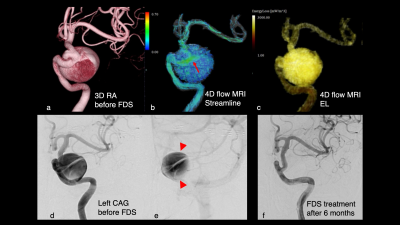 |
5048. Prediction
of aneurysm thrombosis after flow diverter stent treatment using
four-dimensional flow MRI technique
M. Morikawa, H. Koike, H. Ishimaru, R. Toya, Y. Morofuji, T.
Matsuo
Nagasaki University Hospiral, Nagasaki, Japan
Impact: 4D flow MRI predicts future aneurysm thrombosis
after FDS implantation.
|
|
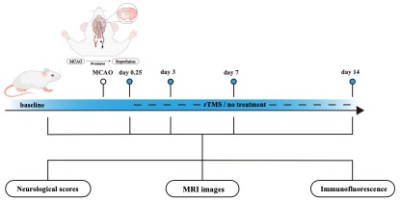 |
5049. Dynamic
Observation of Neuroprotective Effect of rTMS on BBB in an
Ischemic Stroke Rat Model using DCE-MRI combined with
Immunofluorescence
X. Tang, Q. Zhang, W. Liu, H. Shao, S. Huang, A. Saeed, C.
Liu, F. Guo, L. Peng, W. Zhu
Tongji Hospital, Tongji Medical College, Huazhong University of Science and Technology, Wuhan, China
Impact: This study demonstrates that rTMS can
effectively reduce BBB permeability and infarct volume in
ischemic stroke, suggesting a potential therapeutic approach
to improve neurological outcomes by stabilizing the BBB.
|
|
 |
5050. Preliminary
Findings from a Longitudinal Study on Intracranial
Atherosclerotic Disease and Stroke Risk in Brain Tumor Patients
B. Sun, M. Hassan, M. Mosi, A. Safwat, C. Zhu, M.
Mossa-basha
University of Washington, SEATTLE, United States
Impact: The incidence of AIS in brain tumor patients,
albeit low, underscores the need for vigilant cardiovascular
monitoring in this high-risk group.These findings highlight
the importance of early detection and management of ICAD to
mitigate stroke risk and improve patient outcomes.
|
|
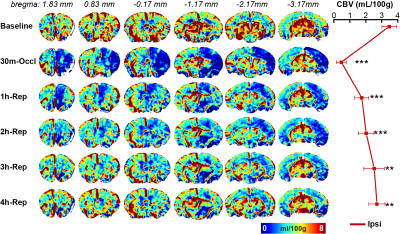 |
5051. Longitudinal
Assessment of Whole-brain Perfusion in Mice with Transient
Middle Cerebral Artery Occlusion by BOLD-DSC MRI
T. T. Le, G. H. Im, S-G Kim
Center for Neuroscience Imaging Research (CNIR), Institute for Basic Science (IBS), Suwon, Korea, Republic of
Impact: This study demonstrates the utility of BOLD-DSC
MRI as a non-invasive, real-time approach to monitor
hemodynamic changes in ischemic stroke, revealing both the
immediate and prolonged effects of transient ischemia on CBV
and CBF.
|
|
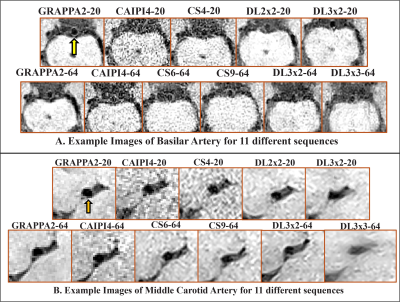 |
5052. Optimizing
Accelerated Protocols for Clinical T1w Vessel Wall Imaging: A
Comparison of Deep Learning, Compressed Sensing, and CAIPI
Methods
S. Pandey, M. Taso, R. Sellers, Z. Fan, K. Guggenberger, S.
Lyo, C. Freeman, C. Zhu, J. Song, M. D. Tisdall
Perelman School of Medicine at the University of Pennsylvania, Philadelphia, United States
Impact: This study optimizes intracranial VWI using 3D
T1w SPACE with DL, CS, and CAIPI for 20- and 64-channel
coils, achieving reduced scan times. The 64-channel CS (6x)
matched clinical image quality, while DL provided superior
noise suppression on 20-channel coils.
|
|
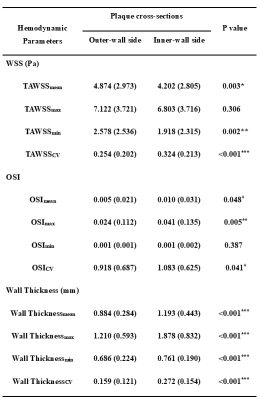 |
5053. Association
between Hemodynamics and Plaque Distribution: Insights from 4D
Flow Imaging of M1 Segment in Ischemic Stroke Patients
L. Liu, P. Jiang, P. Wu, Y. Xue, H. Wang, Z. Chen
Institute of Science and Technology for Brain-inspired Intelligence, Fudan University, Shanghai, China
Impact: Our findings enhance understanding of
hemodynamics effect on plaque development in intracranial
atherosclerosis, and may provide guidance for risk
assessment and treatment strategies.
|
|
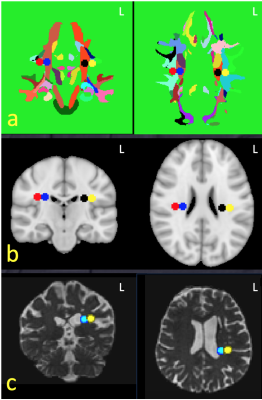 |
5054. Full-automation
of mapping perivascular space using DTI-ALPS – characterization
using the moyamoya disease/syndrome
T-c Yeh, H-Y Wu, T-Y Chen, P-C Yu, C-M Cheng, C-C Chou
Taipei Veterans General Hospital, Taipei, Taiwan
Impact: DTI-ALPS detected the damage of PVS in moyamoya
disease with infract, when DTI-ALPS was not able to detect
the loss of PVS of arterial site in moyamoya disease without
infarct.
|
|
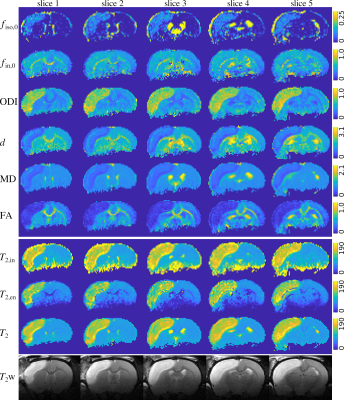 |
5055. Characterisation
of compartmental diffusion and transverse relaxation properties
of rat ischaemic tissue after stroke
E. Farrher, K-H Cho, C-W Chiang, S-M Huang, M-J Chen, C-H
Choi, L-W Kuo, N. J. Shah
Forschungszentrum Jülich, Jülich, Germany
Impact: The application of multi-echo NODDI to
investigate microstructural properties of ischaemic tissue
is enabled by releasing the intrinsic diffusivity
(conventionally fixed to a brain-wide value), which is
greatly affected in this tissue pathology.
|
|
 |
5056. Use
of Mean Apparent Propagator (MAP) MRI in Patients with Acute
Ischemic Stroke: A comparative study with DTI and NODDI
J. Diamandi, C. Raimondo, M. Alizadeh, K. Piper, P. Patel,
A. Flanders, S. Tjoumakaris, R. Gooch, P. Jabbour, R.
Rosenwasser, N. Mouchtouris
University of Pittsburgh School of Medicine, Pittsburgh, United States
Impact:
This study shows how the time-efficient MAP MRI has
potential for clinical use in patients with
AIS. RTPP, PA, and RTOP MAP measures were closely
related with ICVF, OCI, FWF NODDI
measures, and could serve as equivalent measures.
|
|
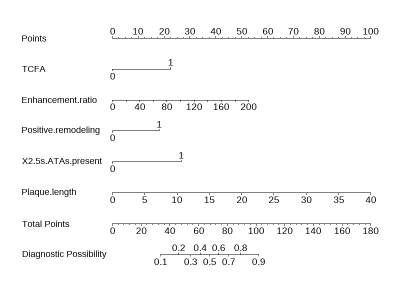 |
5057. A
Predictive Model for the Risk of Stroke in ICAS patients based
on ASL and High-resolution MRI
L. Li, M. Tang, X. Yan, Y. Wen, K. Ai, X. Lei, X. Zhang
Shaanxi Provincial People's Hospital, xi an, China
Impact: The nomogram integrating plaque characteristics
of HR-MRI with presence of 2.5s-ATA in ASL imaging can
accurately predicts ischemic stroke in sICAS, supporting
risk stratification for stroke decision-making. It also
offers a foundation for early risk assessment and
intervention in TIA.
|
|
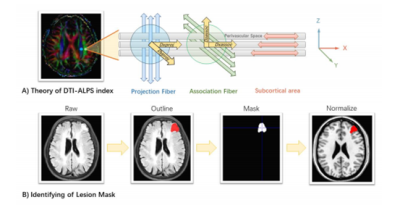 |
5058. Investigation
of the glymphatic system associated with post-stroke fatigue
utilizing diffusion tensor imaging along the perivascular space
P. Wang, Z. Lu, W. Sun, Y. Zhang
The First Affiliated Hospital of University of Science and Technology of China, Hefei, China
Impact: The glymphatic system function is closely
related to the occurrence and progression of post-stroke
fatigue, which may be a potential therapeutic target for the
treatment and prevention of post-stroke fatigue.
|
|
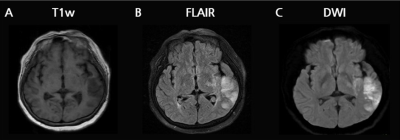 |
5059. Predicting
12 Month Functional Recovery After Ischemic Stroke Using
Lesional Topography-Based Deep Neural Network
J. Lee, C-W Kim, Y. Kim, J. Lee, D. Y. Kim, J. Y. Choi
Yonsei University, Wonju, Korea, Republic of
Impact: This study demonstrates that incorporating
topographic features into predictive models provides
additional information, significantly improving outcome
predictions for ischemic stroke patients.
|
|
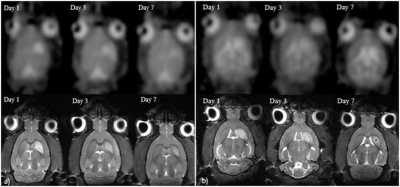 |
5060. Potential
of Intranasally Delivered Exosomes Derived from Mesenchymal Stem
Cells as Treatment for Ischemic Stroke: Proton and Sodium MRI at
21.1 T
A. Arbabian, M. Elumalai, S. Grant
National High Magnetic Field Laboratory, Tallahassee, United States
Impact: MRI-based evaluation of intranasal EV therapy
provides a reliable approach to monitor recovery and sodium
dynamics post-stroke, meeting a critical need for
non-invasive, effective treatments and their assessment.
|
|
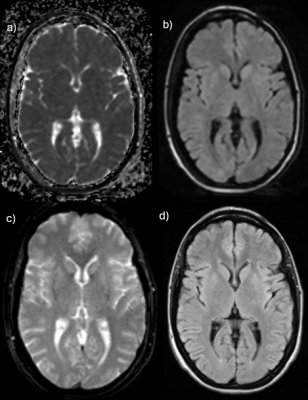 |
5061. A
fast stroke imaging protocol at 0.5T using high performance
gradients
W. Oakden, C. Harris, C. Wiens, J. Stainsby, S. Chavez, A.
Curtis
Synaptive Medical , Toronto, Canada
Impact: A 0.5T head-only MRI equipped with high
performance gradients can potentially be used for rapid
diagnosis of acute stroke. The small footprint, low field,
and head-only design makes this magnet easier to site,
improving MRI access for acute stroke patients.
|
|
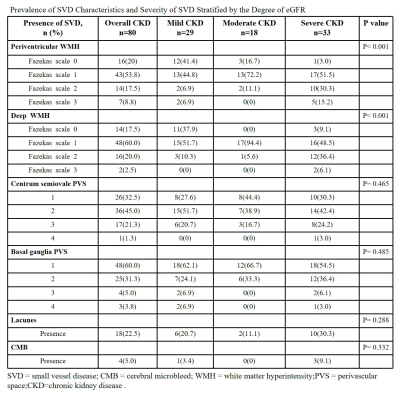 |
5062. Kidney-brain
crosstalk: early assessment of brain damage in chronic kidney
disease by using brain microcirculation impariment features
X. Guo, A. Mei, J. Qu, X. Lou, J. Lyu
First Medical Center of Chinese PLA General Hospital, Beijing, China
Impact: WMH potentially serving as an early warning
indicator of the severity of cerebral damage in kidney
disease.
|
|
 |
5063. MRI
Evaluation of Cerebral Microbleeds, Silent Infarct, Iron Deposit
with QSM in Sickle Cell Disease and Thalassemia Compared to
Healthy Controls
H. Yu, W. Lin, M-Y Su, H. Do, D. Berkeley, J. Soun, Y.
Zhang, P. Chang, J-H Chen, B. Tymkiw, W. AlGhuraibawi, M.
Kadbi, M. Fisher, Z. Pakbaz
University of California, Irvine, United States
Impact: Sickle cell and Thalassemia patients may need
blood transfusions, which leads to iron overload. Brain iron
may also increase due to microvasculature damage. QSM may be
performed to evaluate iron deposit levels and microbleeds to
help improve their precision care.
|
|
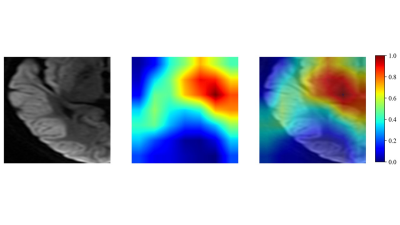 |
5064. Prediction
of Prognosis in Acute Ischemic Stroke Based on Multimodal MRI
Radiomics and Deep Learning.
L. Pei, X. Han
Department of Radiology, The Quzhou Affiliated Hospital of Wenzhou Medical University, Quzhou People’s Hospital, quzhou, China
Impact: These findings suggest that CRD model holds
considerable potential for aiding clinicians in risk
assessment and decision-making for AIS patients.
|
|
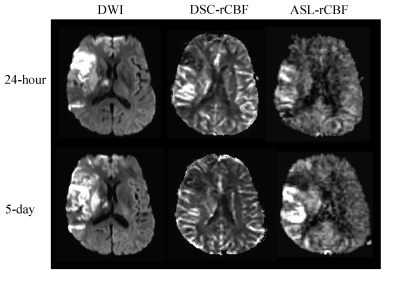 |
5065. Hyperemia
detection on dynamic susceptibility contrast versus arterial
spin labeling MRI in stroke post-endovascular therapy
C. Lomahan, M. Luby, G. Kalarakis, A. Hsia, J. Lynch, S.
Somani, F. Arnberg-Sandor, L. Latour
National Institutes of Health (NIH)/ National Institute of Neurological Disorders and Stroke (NINDS), Bethesda , United States
Impact: Hyperemia detection by arterial spin
labeling-relative cerebral blood flow compared to dynamic
susceptibility contrast-relative cerebral blood flow may be
more accurate in evaluating blood flow increases which can
contribute to optimization of clinical care for stroke
patients post-EVT.
|
|
 |
5066. The
Relationship Between LSA Morphological Characteristics and
Stroke Occurrence at 7T
R. Li, J. Lv, J. Qu, X. Lou
The First Medical Center of Chinese PLA General, Beijing, China
Impact: 3D TOF MRA at 7T can achieve subtle imaging of
LSA, and the number of LSA branches and LSA length can serve
as potential imaging morphological characteristics for
predicting stroke occurrence MCA stenosis patients.
|
|
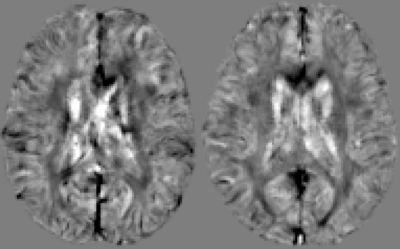 |
5067. Feasibility
of multi-echo QSM to quantify cortical iron depositions
hindering cognitive improvement in patients after carotid
endarterectomy
M. Yabuki, Y. Akamatsu, I. Uwano, F. Mori, M. Sasaki, K.
Yoshioka, K. Chida, M. Kobayashi, S. Fujiwara, K. Ogasawara
Department of Neurosurgery, School of Medicine,Iwate Medical University, Yahaba, Japan., Iwate prefecture, Japan
Impact: The present study demonstrated that preoperative
high cortical magnetic susceptibility adversely affects
cognitive improvement after CEA and that preoperative QSM
predicts patients who will not experience cognitive
improvement after CEA.
|
|
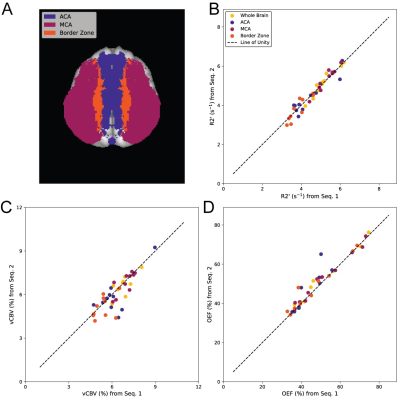 |
5068. Intra-session
repeatability of regional oxygen extraction fraction
quantification using asymmetric spin echo MRI
A. Song, W. Richerson, M. Aumann, S. Davis, L. Milner, L.
Jordan, M. Donahue
Vanderbilt University Medical Center, Nashville, United States
Impact: Region-wise modeling of asymmetric spin echo MRI
data may provide precise measurement of oxygen extraction
fraction, an important hemodynamic measure in
cerebrovascular research. Findings from this study suggest
potential sensitivity to subtle changes in regional hemo-metabolism
with sickle cell disease.
|
The International Society for Magnetic Resonance in Medicine is accredited by the Accreditation Council for Continuing Medical Education to provide continuing medical education for physicians.